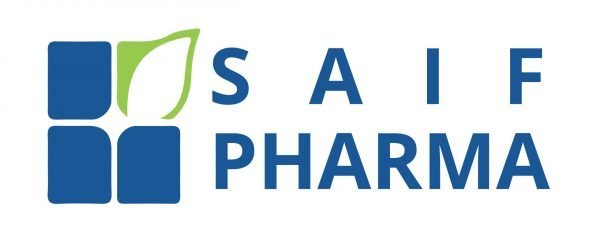Introduction
Hydrea 500 mg, manufactured by Everest Pharmaceuticals Ltd. and distributed globally by Saif Pharma, is an oral antineoplastic medicine containing the active ingredient Hydroxyurea. As a widely used chemotherapeutic and hematologic agent, Hydrea 500 mg is primarily indicated for chronic myeloid leukemia (CML), essential thrombocythemia, polycythemia vera, sickle cell anemia, and certain solid tumors. By inhibiting DNA synthesis through ribonucleotide reductase blockade, Hydrea 500 mg halts cellular replication in rapidly dividing malignant cells. Its therapeutic utility in both oncology and hematology makes it an essential component in advanced clinical practice worldwide.
Key Indications & Therapeutic Benefits
Hydrea 500 mg is prescribed for the treatment and management of the following conditions:
Chronic Myeloid Leukemia (CML): First-line or adjunct therapy in chronic or accelerated phases.
Essential Thrombocythemia (ET): Used to control elevated platelet counts and reduce thrombotic complications.
Polycythemia Vera (PV): Lowers red blood cell mass, reducing hematocrit and preventing strokes or clots.
Sickle Cell Anemia: Increases fetal hemoglobin (HbF), reduces vaso-occlusive crises, and decreases transfusion requirements.
Head and Neck Cancer: Enhances radiotherapy effectiveness in squamous cell carcinoma.
Ovarian and Cervical Cancer: Occasionally used off-label as part of combination regimens.
Mechanism of Action
Ribonucleotide Reductase Inhibition: Hydroxyurea blocks this key enzyme in DNA synthesis, leading to S-phase cell cycle arrest.
Fetal Hemoglobin Induction: In sickle cell patients, Hydrea increases HbF levels, reducing the polymerization of sickled hemoglobin.
Radiation Sensitization: Enhances the cytotoxic effect of radiotherapy by impairing DNA repair mechanisms in tumor cells.
This multi-pronged action makes Hydrea 500 mg effective in both cytoreductive therapy and as an adjunct to radiation or combination chemotherapy.
Pharmacology & Pharmacokinetics
Chemical Class: Antimetabolite / Antineoplastic agent.
Absorption: Rapidly absorbed; peak plasma levels achieved within 1–4 hours of oral administration.
Bioavailability: Approximately 80–100%.
Metabolism: Primarily hepatic and enzymatic degradation in plasma.
Excretion: Mostly renal (up to 50%) with minor biliary elimination.
Half-life: Ranges between 3–9 hours; prolonged in renal impairment.
Protein Binding: Low (not clinically significant).
Recommended Dosage & Administration
Oral Capsule Formulation (500 mg): Administered once or twice daily, with or without food, based on indication and patient-specific factors.
Sickle Cell Disease: Start at 15 mg/kg/day; adjust every 8–12 weeks. Max dose: 35 mg/kg/day.
CML and Myeloproliferative Disorders: Initiate at 20–30 mg/kg/day. Maintenance dose individualized to maintain desired cell counts.
Radiation Therapy (Head and Neck Cancer): 80 mg/kg orally every 3 days during radiotherapy.
Dosage Adjustments:
Renal Impairment: Dose reduction required; closely monitor renal function.
Hepatic Impairment: Use cautiously; no specific adjustment guidelines—monitor liver enzymes.
Myelosuppression: Delay or reduce dose if neutrophils <2,500/mm³ or platelets <100,000/mm³.
Administration Guidelines
Swallow whole with water; do not crush or open capsules due to potential skin and mucosal irritation.
Use protective gloves when handling capsules to prevent exposure to the drug.
Monitor complete blood counts (CBC), renal and hepatic function before and during therapy.
Encourage hydration to reduce renal toxicity risk.
Contraindications & Safety Warnings
Hypersensitivity: Contraindicated in patients with known allergy to hydroxyurea or formulation components.
Severe Bone Marrow Suppression: Avoid use in patients with profound neutropenia or thrombocytopenia.
Pregnancy and Lactation: Teratogenic and embryotoxic—contraindicated during pregnancy and breastfeeding.
Live Vaccines: Should be avoided during therapy due to immunosuppression.
Secondary Malignancy Risk: Long-term use is associated with a small increased risk of leukemia or skin cancers.
Critical Warnings
Myelosuppression: Dose-limiting toxicity; requires weekly CBC monitoring during initiation, then monthly once stable.
Cutaneous Toxicity: Risk of leg ulcers, dermal atrophy, or nail discoloration.
Carcinogenic Potential: Associated with leukemogenic effects and potential genotoxicity with long-term use.
Fertility Effects: May reduce sperm count or impair ovulation; contraception is advised during treatment and for 6 months (females) or 1 year (males) after cessation.
Common Side Effects
Hematologic: Leukopenia, anemia, thrombocytopenia.
Gastrointestinal: Nausea, vomiting, diarrhea, constipation, mucositis.
Dermatologic: Hyperpigmentation, rash, skin ulceration, alopecia.
Others: Fatigue, fever, weight loss, red urine discoloration (non-pathological).
Most side effects are dose-dependent and reversible upon dose reduction or drug discontinuation.
Storage & Handling
Storage Conditions: Store below 30°C in a dry place; protect from light and moisture.
Handling Precautions: Use gloves when handling capsules. Avoid exposure to broken capsules or powder.
Disposal: Follow local regulations for disposal of cytotoxic drugs and materials used during administration.
Why Choose Hydrea 500 mg from Saif Pharma?
Saif Pharma is a globally recognized oncology medicine supplier with a commitment to delivering high-quality, affordable, and WHO-GMP-compliant pharmaceuticals to over 60 countries worldwide. In collaboration with Everest Pharmaceuticals Ltd, one of Bangladesh’s premier drug manufacturers, Saif Pharma ensures every capsule of Hydrea 500 mg adheres to international standards for safety, potency, and stability.
Key advantages include:
Reliable global distribution network
Competitive pricing for hospitals and healthcare institutions
Batch-tracked and temperature-controlled logistics
Technical and regulatory support for oncology professionals
Clinical Advantages of Hydroxyurea
Effective across multiple hematologic malignancies and genetic disorders
Reduces thrombotic and vaso-occlusive complications in chronic conditions
Enhances radiation therapy outcomes in selected cancers
Oral route allows at-home administration under physician supervision
Patient Management Tips
Monitoring: Regular CBC, liver and kidney function tests are essential.
Hydration: Encourage daily fluid intake to minimize nephrotoxicity.
Contraception: Ensure strict contraceptive use during and after treatment.
Skin Protection: Advise sun protection due to increased photosensitivity.
Overdose Management
Hydroxyurea overdose may result in severe myelosuppression, mucocutaneous toxicity, or acute renal failure. There is no specific antidote. Management includes supportive care, blood product transfusions, and growth factor support (e.g., G-CSF).
Conclusion
Hydrea 500 mg (Hydroxyurea) Capsule, manufactured by Everest Pharmaceuticals Ltd and globally distributed by Saif Pharma, is a cornerstone treatment for various blood cancers and genetic blood disorders. With a well-documented efficacy profile, manageable safety parameters, and convenient oral dosing, Hydrea provides critical support in chronic disease control and cancer care. Saif Pharma’s dependable international distribution ensures that high-quality oncology therapies like Hydrea 500 mg reach healthcare providers and patients in need—on time, every time.







